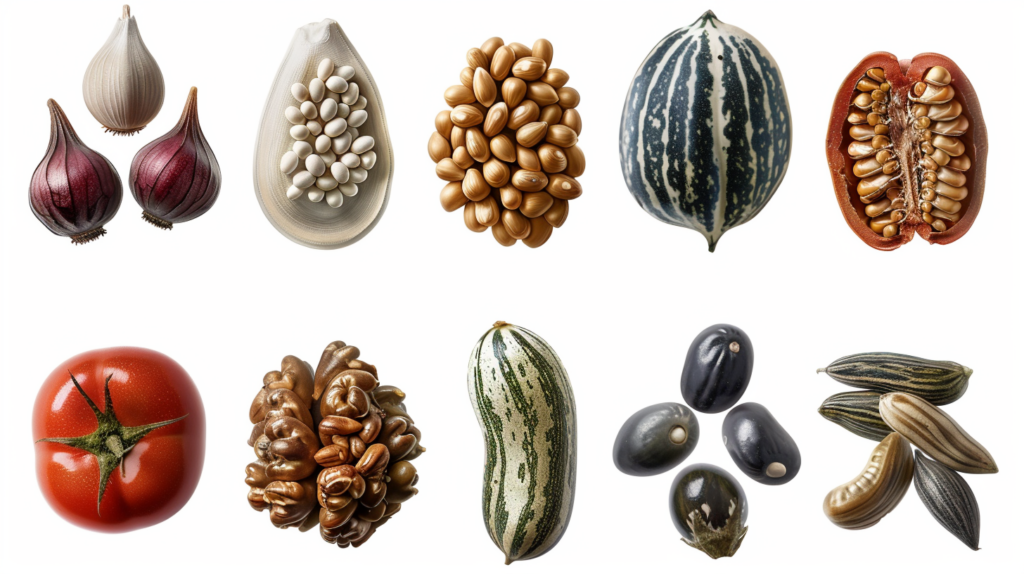Introduction
Hydroponic blueberry cultivation is gaining traction among both hobbyists and commercial farmers. This cutting-edge approach brings several advantages, such as all-year production, space efficiency, and meticulous nutrient and water management. By growing blueberries without soil, producers can achieve greater yields, enhanced fruit quality, and a decrease in pests and diseases.
Hydroponic systems also enable the growth of blueberries in locations where traditional soil farming is impractical, due to suboptimal soil conditions or space constraints. This guide delves into the five key steps to effectively grow blueberries hydroponically, empowering you to elevate your indoor gardening endeavors.
Importance of Growing Blueberries Hydroponically
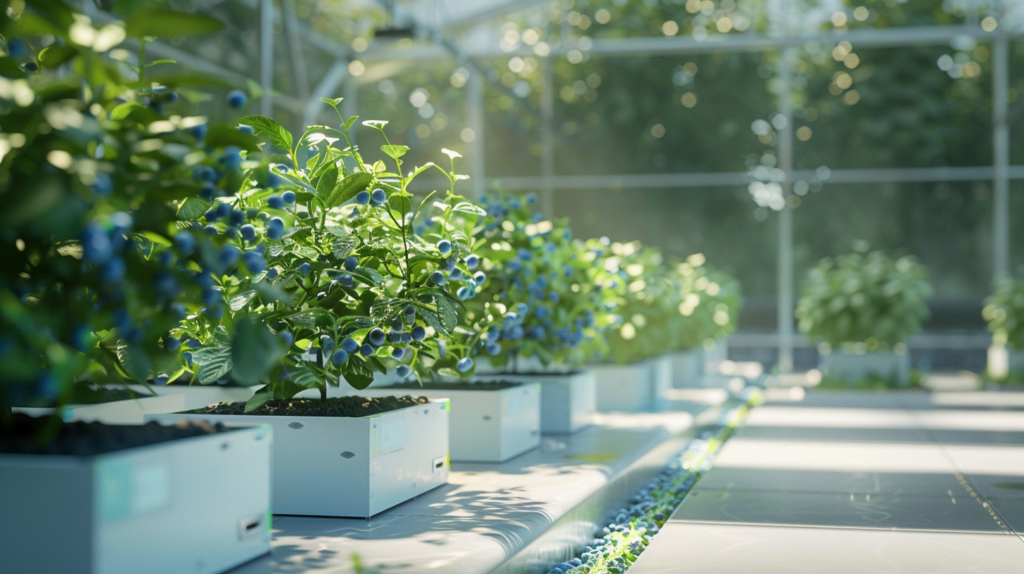
Hydroponic cultivation of blueberries presents numerous benefits compared to traditional soil-based methods. This soilless approach enhances water and nutrient usage efficiency, leading to reduced waste and a smaller environmental footprint. Hydroponic systems grant growers superior control over the environment, ensuring blueberry plants receive the ideal conditions to flourish. With the capability to cultivate blueberries indoors, growers can produce fresh, superior-quality berries all year, irrespective of external climate conditions. This capability significantly extends the growing season, offering consumers access to fresh, locally sourced blueberries even in the off-season.
Additionally, growing blueberries hydroponically lowers the risk of soil-borne diseases and pests, promoting healthier plants and more abundant yields. Hydroponic systems, requiring less space and labor, simplify the process for both hobbyists and commercial producers to reap the rewards of this delectable and healthful fruit.
Benefits of Hydroponic Blueberry Cultivation
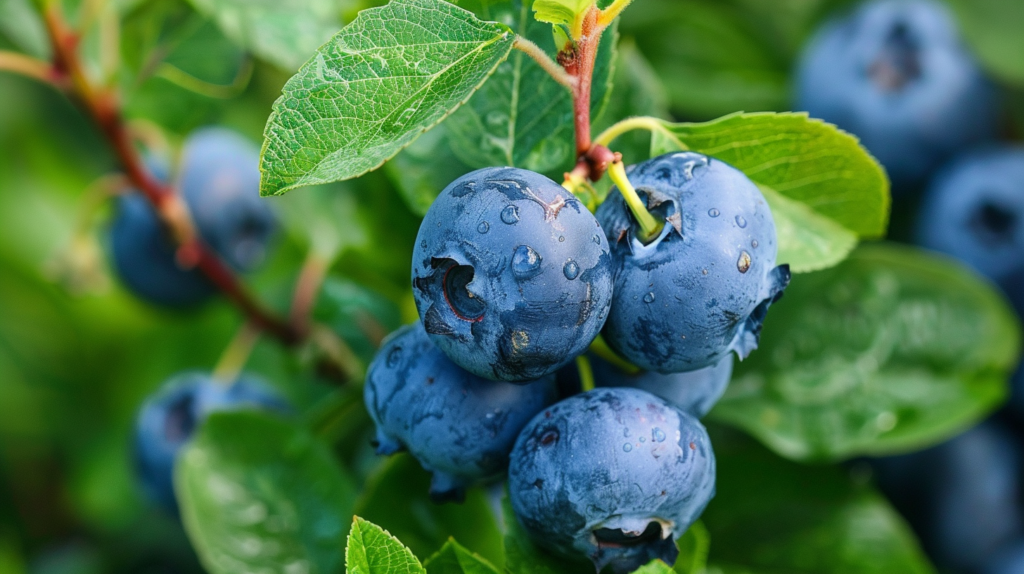
The practice of growing blueberries hydroponically brings forth a wealth of advantages, appealing to both commercial farmers and hobbyist gardeners. A standout benefit is the potential for increased yields within a more compact area, a stark contrast to conventional soil-based agriculture. Hydroponic setups provide meticulous nutrient management, ensuring plants access the perfect mix of nutrients for optimal growth and berry production. This leads to robust, healthier plants and berries that are both larger and richer in flavor.
Moreover, the elimination of soil tilling in hydroponic farming cuts down on labor expenses and helps prevent soil erosion. Operating within a controlled environment allows for the extension of the growing season, enabling the year-round production of blueberries. This aligns with the growing consumer desire for fresh, locally sourced produce throughout the year. Additionally, hydroponic systems boast water efficiency, conserving an essential resource and diminishing the likelihood of water-related diseases. With thoughtful oversight, cultivating blueberries hydroponically can evolve into a sustainable and economically viable venture.
Step 1: Choose the Right Hydroponic System
Identifying the ideal hydroponic system is a pivotal step in achieving success with hydroponic blueberry farming. Various systems present different benefits, including automation levels, spatial efficiency, and upkeep demands. A thorough evaluation of aspects like the space you have available, your financial plan, and how hands-on you wish to be will guide you in selecting the system that best aligns with your requirements.
Overview of Different Hydroponic Systems for Blueberries
Selecting the right hydroponic system is essential for thriving blueberry cultivation, with each system offering unique benefits and considerations. The Nutrient Film Technique (NFT) stands out for its space efficiency and ease of maintenance, circulating a nutrient-rich water stream over the roots, ideal for both commercial and hobbyist growers.
Deep Water Culture (DWC) immerses plant roots in an oxygenated nutrient solution, simple in setup yet requiring diligent monitoring and upkeep, suitable for larger plant varieties. The Ebb and Flow system, or Flood and Drain, caters to those with spatial constraints, periodically soaking the roots in nutrient solution then draining, optimizing space and water use. Aeroponics, which mists plant roots with nutrient solution in air, offers another compact solution for blueberry growth.
Additionally, the Drip and Wick systems provide various automation and water efficiency levels, though they may demand more initial effort and maintenance. The selection of a hydroponic system ultimately hinges on the operation’s scale, space availability, budget, and grower preferences.
Recommended Systems: Nutrient Film Technique (NFT), Deep Water Culture (DWC)
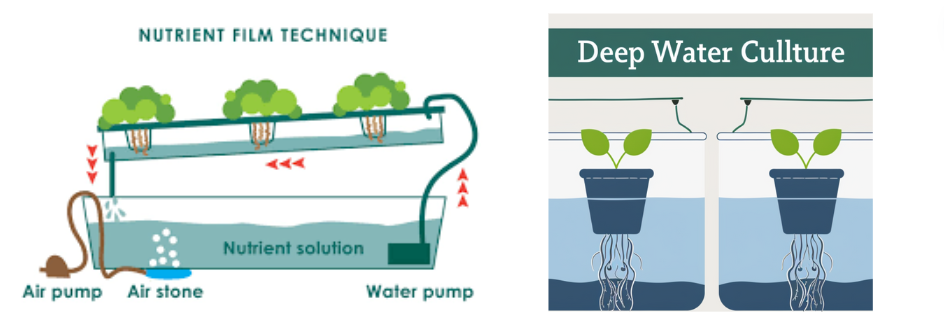
The Nutrient Film Technique (NFT) and Deep Water Culture (DWC) are standout systems for hydroponic blueberry farming. NFT excels in space and resource efficiency, making it ideal for blueberries. It operates by circulating a thin flow of nutrient-dense water across the roots, ensuring continuous oxygen and nutrient access. Its simplicity in setup and maintenance has made NFT a favored option among both commercial and hobbyist growers.
Conversely, DWC presents a unique method by suspending roots in an oxygen-rich nutrient solution, facilitating effective nutrient and oxygen absorption. Known for its straightforwardness and capacity to support larger plants, DWC is perfect for cultivating mature blueberry plants. The aeration in DWC systems also plays a crucial role in hindering harmful microbial growth, fostering a healthier root zone.
Both NFT and DWC systems offer scalability, making them suitable for a range of operations, from personal home gardens to expansive commercial ventures. They provide meticulous control over nutrient delivery, pH balance, and environmental factors, promoting superior growth and berry yield in hydroponic blueberry cultivation.
Factors to Consider: Space, Budget, and Maintenance Requirements
Selecting the appropriate hydroponic system for growing blueberries necessitates careful consideration of several key factors, including the available space, budgetary limitations, and the need for maintenance. The amount of space you have plays a vital role, as certain systems, such as the Nutrient Film Technique (NFT) or aeroponics, are designed to optimize the use of limited areas through vertical farming. Budget considerations are equally critical, with the cost of initial setup and ongoing operations differing markedly across various hydroponic systems.
Typically, systems featuring higher levels of automation and sophisticated technology are associated with greater costs. Maintenance demands are another crucial aspect to assess, as the frequency and intensity of required monitoring and adjustments can vary. For example, Deep Water Culture (DWC) systems might need more active involvement in maintenance compared to the more hands-off approach afforded by NFT systems. By thoughtfully analyzing these factors, growers can make an informed decision on a hydroponic system that best matches their specific circumstances, financial capacity, and personal preferences.
Step 2: Select the Appropriate Growing Medium
The selection of a suitable growing medium is a critical component for thriving hydroponic blueberry growth. This medium acts as a support for the plant’s root system and is essential for maintaining proper nutrient and water retention, ensuring adequate aeration, and facilitating effective drainage.
Importance of the Growing Medium for Blueberries
In hydroponic blueberry farming, the choice of growing medium is crucial, significantly affecting plant vitality, growth rate, and berry yield. Hydroponic cultivation diverges from traditional soil farming by utilizing a selected medium to support and nourish the root system, rather than relying on soil. An effective medium not only secures the plant but also promotes essential air flow, drainage, and moisture conservation, key factors for thriving blueberry plants.
Moreover, the medium’s ability to maintain an appropriate pH and to hold nutrients plays a vital role in the plant’s nutrient absorption efficiency. Opting for a growing medium that meets the unique needs of blueberry plants is fundamental to securing abundant harvests and superior quality fruits.
Recommended Mediums: Coco Coir, Perlite, Rockwool
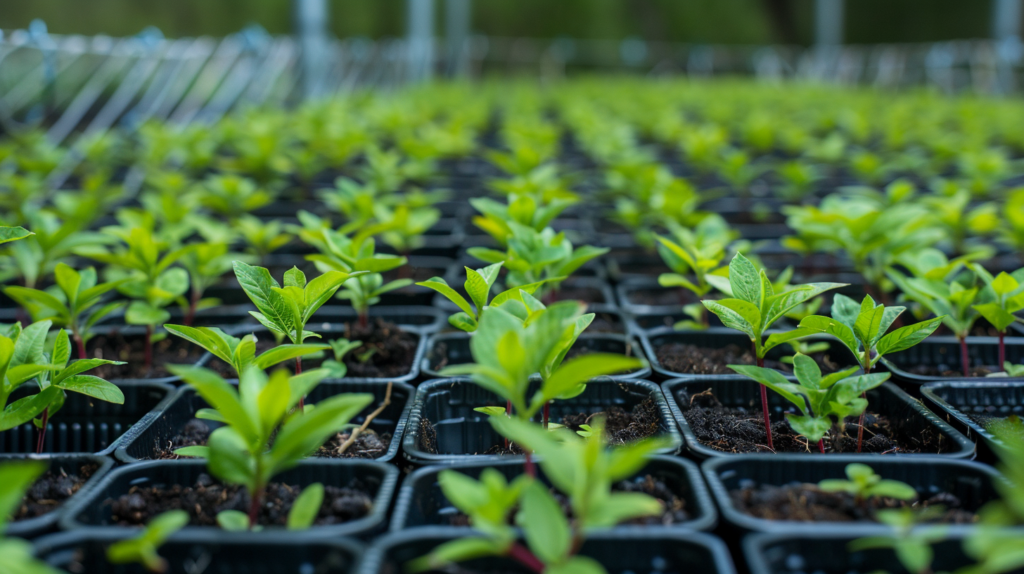
For hydroponic blueberry cultivation, coco coir, perlite, and rockwool stand out as the preferred growing mediums. Coco coir, sourced from coconut husks, is an eco-friendly option known for its superior water retention and breathability. It provides a stable foundation for root development and ensures optimal drainage, making it a prime choice for blueberry plants.
Perlite, with its volcanic origin, excels in drainage and maintaining necessary airspace around the roots, contributing to a healthy root environment. Its light composition makes it a user-friendly addition to hydroponic setups. Rockwool, crafted from molten rock spun into fibers, is prized for its uniformity and pH neutrality. It adeptly holds water and nutrients while supporting proper root aeration and drainage, making it especially compatible with systems like the Nutrient Film Technique (NFT).
These mediums can be employed alone or in blends to customize the growing conditions for hydroponic blueberries. Growers should also weigh considerations such as cost, accessibility, and personal preference when choosing the most appropriate medium for their hydroponic arrangement and goals.
Preparing the Growing Medium for Optimal pH and Nutrient Levels
Ensuring the growing medium is properly prepared is crucial for maintaining the ideal pH and nutrient balance for hydroponic blueberry growth. Blueberries flourish in acidic conditions, preferring a pH range between 4.0 and 5.5. To establish this acidic environment, growers might need to modify the medium’s pH prior to planting.
This adjustment can be achieved by rinsing the medium with an acidic solution or by adding acidic materials such as sphagnum peat moss or elemental sulfur. Equally important is the provision of a balanced nutrient mix, including key elements like nitrogen, phosphorus, potassium, and essential micronutrients such as iron and boron. This can be accomplished through the use of slow-release fertilizers or nutrient mixes specifically designed for blueberry cultivation.
Continuous monitoring and fine-tuning of both pH and nutrient concentrations are vital for sustaining a vigorous and fruitful hydroponic blueberry operation.
Step 3: Provide the Right Nutrients and pH Levels
Ensuring the provision of appropriate nutrients and the maintenance of optimal pH levels are fundamental aspects of successful hydroponic blueberry farming. Blueberries possess distinct nutritional needs and flourish in acidic conditions, underscoring the importance of meticulous management of these elements.
Essential Nutrients for Blueberry Growth
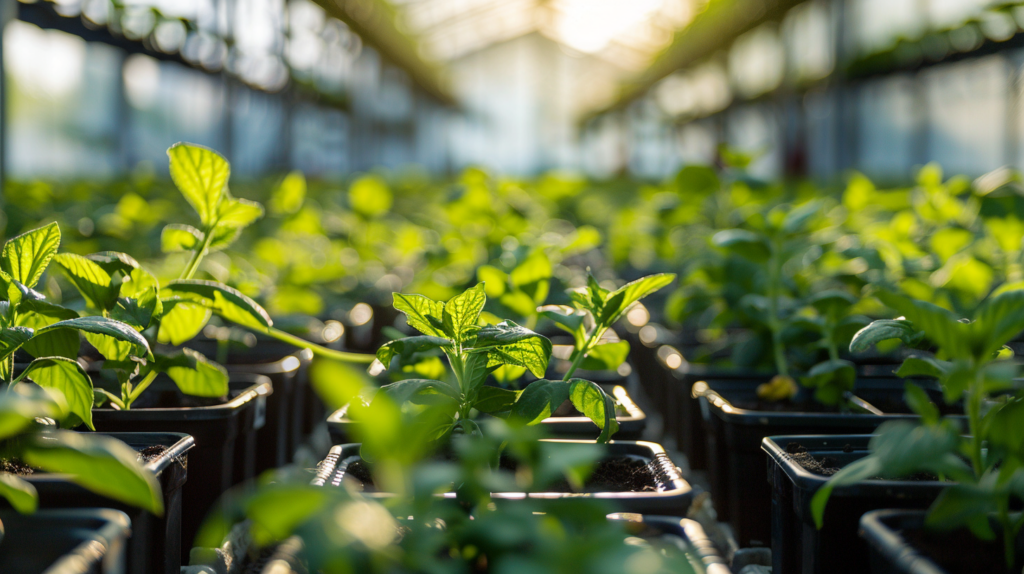
In hydroponic systems, blueberries require specific nutrients for peak growth and berry production. These essential nutrients fall into two groups: macronutrients and micronutrients. Macronutrients, needed in greater amounts, encompass nitrogen (N), phosphorus (P), and potassium (K), which support vegetative growth, root development, and fruiting. Calcium (Ca) and magnesium (Mg) are also critical macronutrients, contributing to plant structure and enzyme function. Micronutrients, required in trace amounts but no less vital, include iron (Fe) for chlorophyll synthesis and plant health; boron (B) for effective pollination and fruit setting; and zinc (Zn) for enzymatic activity and root growth.
Additional micronutrients such as manganese (Mn), copper (Cu), and molybdenum (Mo) are indispensable for the plant’s metabolic activities. A balanced delivery of these nutrients through a well-crafted nutrient solution is key to fostering robust growth, high yields, and quality fruit in hydroponic blueberry cultivation.
Maintaining the Ideal pH Range (4.0 to 5.5)
For hydroponic blueberry farming to thrive, keeping the pH within the 4.0 to 5.5 range is essential. Blueberries prefer acidic conditions, and this pH window promotes the best nutrient absorption and plant health. Deviations from this range can lead to nutrient imbalances, manifesting as stunted growth, leaf discoloration, and diminished fruit yield.
Regular monitoring and adjustment of the nutrient solution’s pH are imperative for maintaining it within the optimal range. Utilizing pH meters and incorporating pH adjusters like phosphoric acid or potassium hydroxide are effective strategies for pH control. Adequate pH management not only facilitates proper nutrient uptake but also aids in averting the accumulation of detrimental salts or pathogens within the hydroponic setup.
Nutrient Solutions and Fertilizers for Hydroponic Blueberries
The application of appropriate nutrient solutions and fertilizers is a cornerstone of hydroponic blueberry success. Blueberries demand specific nutritional compositions, necessitating the use of specially formulated solutions. The market offers a variety of commercial nutrient mixes engineered for hydroponic berries, featuring a balanced assortment of macronutrients—nitrogen, phosphorus, potassium—and crucial micronutrients like iron, boron, and zinc. Growers also have the option to concoct their own nutrient blends by mixing individual fertilizers, affording them more precise control over nutrient proportions.
Key fertilizers for hydroponic blueberries include calcium nitrate, potassium nitrate, monopotassium phosphate, and sources of chelated iron. Adhering to the manufacturer’s guidelines or seeking expert advice is vital to ascertain proper nutrient levels and feeding schedules. Imbalances caused by overfeeding or underfeeding can adversely affect plant development and berry quality. Consistent monitoring and fine-tuning of nutrient concentrations, along with vigilant pH regulation, are imperative to foster a robust and fruitful hydroponic blueberry environment.
Step 4: Environmental Control and Monitoring
Effective control and vigilant monitoring of the environment are key to thriving hydroponic blueberry farming. The regulation of temperature, humidity, and light intensity is fundamental to ensuring optimal plant development and maximizing fruit yield.
Importance of Temperature, Humidity, and Lighting
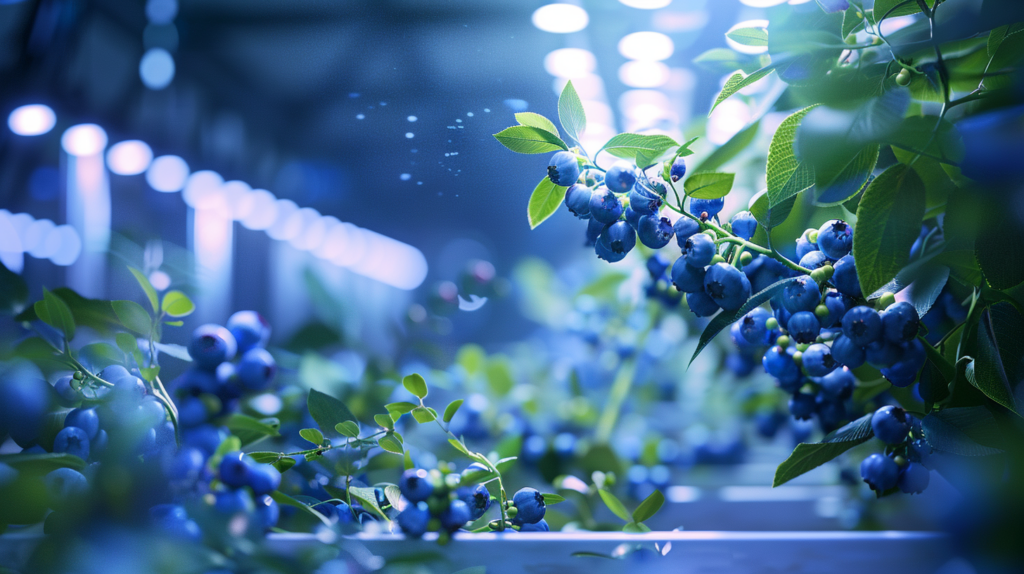
The growth and yield of hydroponic blueberry plants are profoundly influenced by environmental elements such as temperature, humidity, and lighting. Optimal management of these conditions is vital for promoting robust plant growth, prolific blooming, and the production of high-quality berries. Temperature plays a role in key plant processes like nutrient absorption, respiration, and photosynthesis. Humidity levels are integral to transpiration and can also affect the plant’s vulnerability to diseases.
Adequate lighting is essential for the photosynthetic process, as well as for inducing flowering and setting fruit. By meticulously controlling and monitoring these environmental factors, growers can cultivate an ideal microclimate that encourages strong plant development, optimizes yield, and improves berry quality. Neglecting to provide appropriate temperature, humidity, and lighting can result in inhibited growth, diminished yields, and poor fruit quality.
Optimal Temperature and Humidity Ranges for Blueberries
For hydroponic blueberry cultivation to flourish, it’s essential to sustain specific temperature and humidity levels conducive to their growth and berry production. Blueberry plants perform best within a temperature range of 60°F to 75°F (15°C to 24°C). Exposure to temperatures below 50°F (10°C) or above 85°F (29°C) can stress the plants, adversely affecting their growth and productivity. In terms of humidity, blueberries favor a moderate to high relative humidity level, ideally between 50% and 70%.
Humidity levels outside this range can either lead to increased transpiration and water stress at low humidity or elevate the risk of fungal infections and hinder fruit set at high humidity. Keeping temperature and humidity within these optimal ranges is key to ensuring vigorous vegetative growth, prolific flowering, and the development of high-quality blueberries in hydroponic settings.
Lighting Requirements and Recommended Grow Lights
Adequate lighting is a cornerstone of hydroponic blueberry farming, pivotal for the photosynthesis process and affecting overall plant development, blooming, and berry yield. Blueberries necessitate at least 6 to 8 hours of direct sunlight daily or an equivalent amount of artificial light during their growth period. In indoor hydroponic systems, employing grow lights is essential to meet these light demands.
LED grow lights stand out as the preferred choice for blueberry growth due to their efficiency in energy use, longevity, and their capacity to emit precise light wavelengths crucial for plant health and productivity. Opting for full-spectrum LED lights, which offer a balanced mix of blue, red, and white wavelengths, is beneficial. Blue light fosters vegetative growth and robust stems, red light aids in flowering and fruiting, and white light contributes to general plant well-being. While high-intensity discharge (HID) lamps, including metal halide (MH) and high-pressure sodium (HPS) lamps, are alternatives that can fulfill blueberry light requirements, they are less energy-efficient and produce more heat than LEDs.
Regardless of the chosen light source, it’s important to correctly position the lights, adjusting for the right distance and ensuring the proper intensity and duration of light for each stage of plant growth, to maximize plant health and fruit production.
Step 5: Pruning, Pollination, and Harvesting
Implementing effective pruning, pollination, and harvesting strategies is crucial for optimizing yield and achieving superior fruit quality in hydroponic blueberry cultivation.
Pruning Techniques for Hydroponic Blueberries
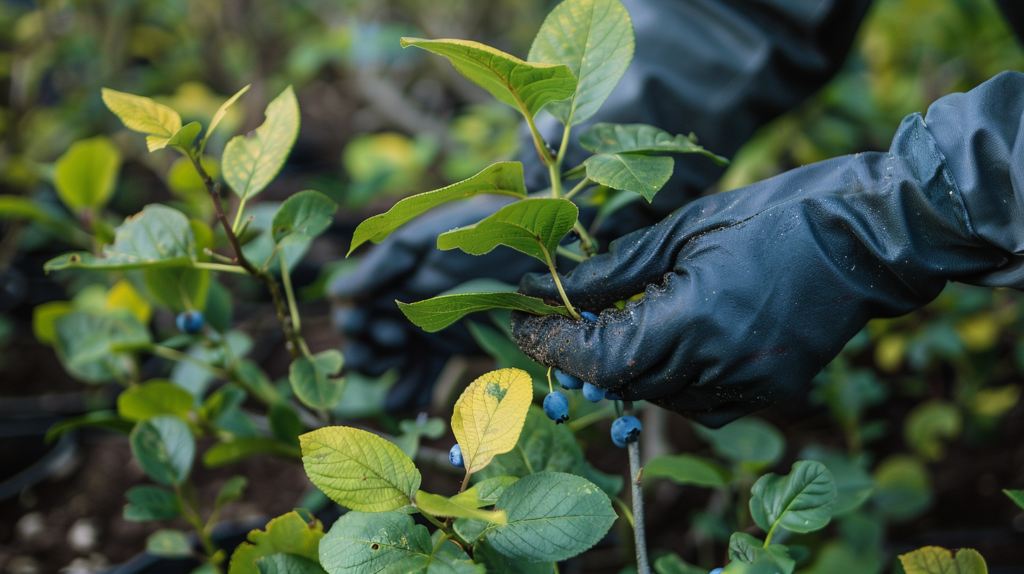
Pruning stands as a vital practice in hydroponic blueberry farming, essential for sustaining plant vigor, enhancing airflow, and maximizing berry yield. The main objective of pruning is to eliminate branches that are dead, damaged, or causing congestion, which improves light access and air movement through the plant’s canopy. Annual pruning is best performed in the late winter or early spring before the onset of new growth.
Begin by cutting away any branches that are dead or show signs of disease, then proceed to thin out dense areas to open the plant’s center. It’s also beneficial to trim branches that hang low or grow inward to bolster air circulation and reduce the risk of disease. Additionally, removing frail or slender shoots will help to foster the growth of robust, fruitful canes.
Pollination Methods and Considerations
Effective pollination is essential for achieving a fruitful harvest and high-quality berries in hydroponic blueberry farming. While blueberries are capable of self-pollination, engaging in cross-pollination among different varieties can markedly enhance both the quantity and quality of the fruit. In indoor hydroponic environments, it may be necessary to employ manual pollination techniques or introduce natural pollinators. Manual pollination can be conducted with a soft brush or cotton swab to gently transfer pollen among flowers, ideally performed during the morning hours of peak flowering when blooms are most receptive.
As an alternative, the introduction of natural pollinators, such as bumblebees or mason bees, into the grow area can facilitate effective cross-pollination through their natural activity. To support the health and productivity of these pollinators, it’s important to provide suitable nesting opportunities and to avoid the use of harmful pesticides.
Harvesting and Storage Tips for Hydroponic Blueberries
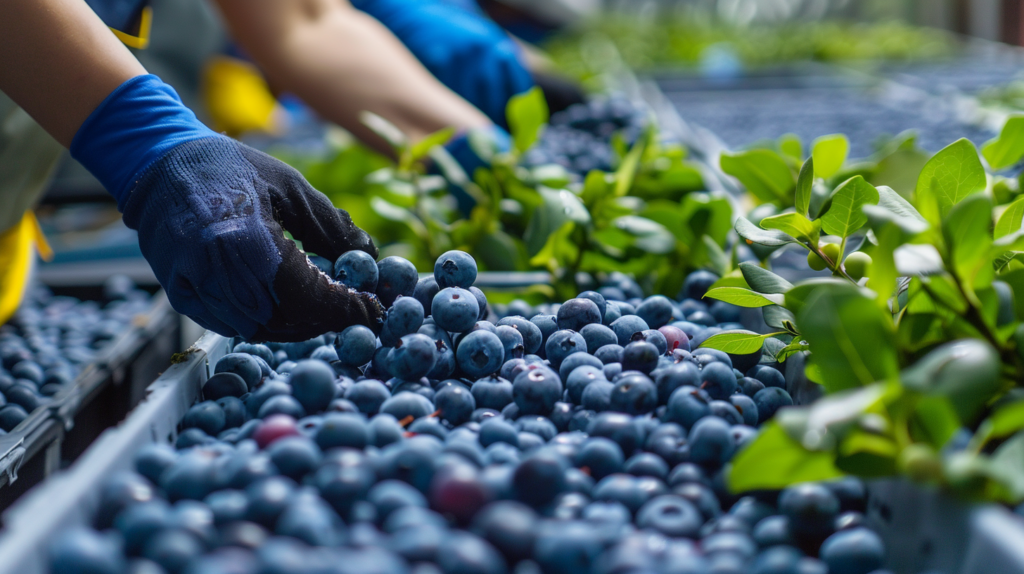
Implementing the right harvesting and storage methods is key to maximizing the quality and shelf life of hydroponic blueberries. Harvest blueberries at full ripeness, indicated by a uniform deep blue hue and a slight yield to pressure. To detach the berries, gently twist or roll them off the stem, being careful to avoid squashing or damaging the fruit.
Early morning is the optimal time for harvesting to reduce the risk of the berries becoming too soft. Collect the berries in shallow containers or trays lined with soft material, ensuring not to overpack them to avoid bruising. Immediately refrigerating the blueberries after picking will significantly enhance their shelf life. When stored in a moisture-proof container or bag within the refrigerator, blueberries can remain fresh for up to two weeks.
For longer preservation, freezing is an effective option. Arrange the berries in a single layer on a baking sheet to freeze, then transfer them to airtight containers or freezer bags for storage. Gentle handling during storage or freezing is crucial to maintain the berries’ integrity and minimize moisture loss. These storage practices are instrumental in preserving the taste, texture, and nutritional content of hydroponic blueberries, extending the enjoyment of your harvest.
Conclusion
To sum up, the hydroponic cultivation of blueberries stands as a gratifying and eco-friendly pursuit, capable of producing abundant crops of flavorful and nutritious berries.
Recap of the 5 Steps for Successful Hydroponic Blueberry Cultivation

Achieving success in hydroponic blueberry cultivation hinges on adhering to these five critical steps: Begin by selecting an appropriate hydroponic system, such as Nutrient Film Technique (NFT) or Deep Water Culture (DWC), tailored to your available space, budget, and maintenance capacity. Next, choose a suitable growing medium, like coco coir, perlite, or rockwool, ensuring it’s primed for the best pH and nutrient balance.
The third step involves providing an accurate nutrient mix and keeping the pH within the optimal 4.0 to 5.5 range for blueberries. Fourth, diligently control and monitor the environmental parameters, including temperature, humidity, and lighting, to establish ideal growth conditions. Lastly, practice effective pruning, encourage pollination, and apply the best harvesting and storage methods to secure an abundant yield of high-quality blueberries.
Encouragement to Start Growing Blueberries Hydroponically
Embracing these guidelines empowers you to experience the satisfaction of cultivating your own succulent, nutrient-packed blueberries, whether for personal enjoyment or commercial gain. Hydroponic blueberry farming presents a sustainable, space-efficient method to consistently yield fresh, top-tier berries throughout the year, independent of external environmental constraints. Seize this thrilling chance to broaden your gardening expertise and begin the fulfilling adventure of hydroponic blueberry cultivation today.



